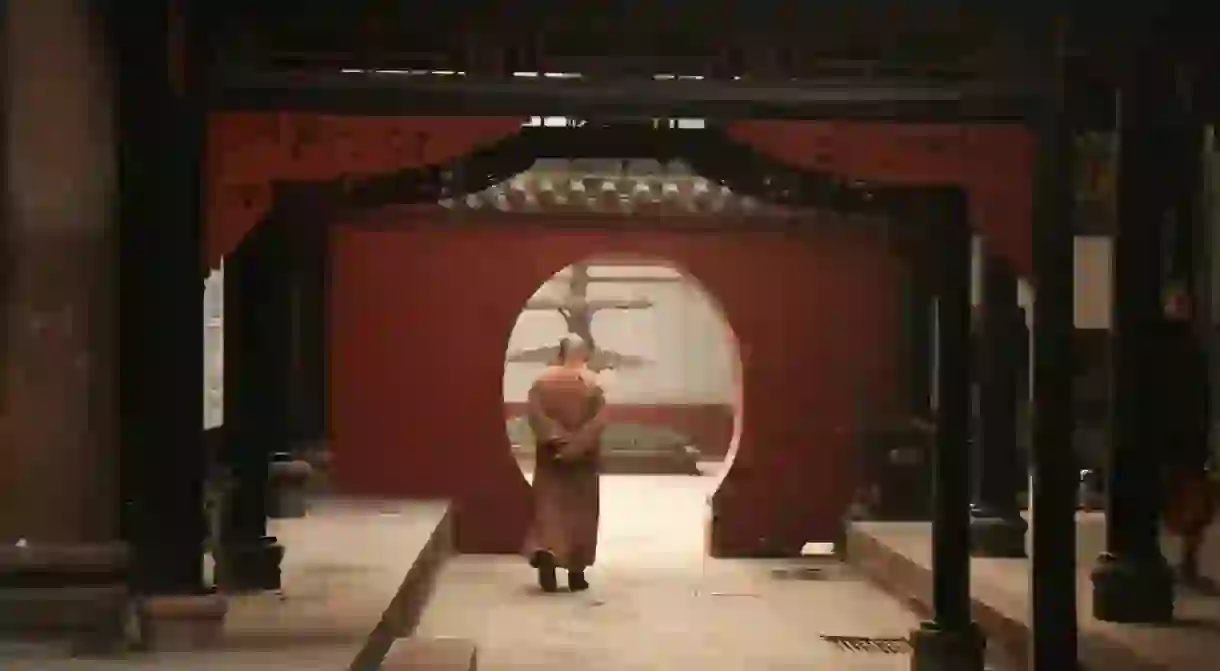The Most Beautiful Temples in Sichuan Province

Sichuan is one of the most beautiful provinces in China, and also has deep historical roots in both Buddhism and Taoism. Despite the crackdown on religion during Mao Zedong’s reign, the temples of Sichuan came roaring back into popularity soon after. Here are the province’s most gorgeous and venerated places of worship.
In Chengdu:
Wenshu Monastery (Wénshū yuàn, 文殊院)
Buddhist Temple

Baoguang Temple (Bǎo guāng sì, 宝光寺)
Buddhist Temple

Zhaojue Temple (Zhāo jué sì, 昭觉寺)
Buddhist Temple, Monastery, Zoo

Qingyang Palace(Qīngyáng gōng, 青羊宫)
Monastery

You’ll also find nuns and monks training at the Two Immortals Monastery toward the back of the temple. It’s the only monastery in southwest China authorized to certify Taoist training, initiations and the passing of lineage. After wandering the grounds, make sure to see the Eight Trigrams Pavilion, which has a gorgeous dome. Then visit the small teahouse on the left to mingle with the local visitors and worshipers. Outside the city:
Mount Qingcheng (Qīngchéng shān, 青城山)
A 45 minute train ride from the center of Chengdu will drop you near the foot of the verdant Mount Qingcheng, known as one of the four original birthplaces of Taoism in China. Its fame draws not only from the beauty of its 36 peaks, but also from Taoist mythology. The founder of Taoism, Zhao Daoling, thought the serene natural landscape of Mount Qingcheng was the perfect home for the development and prosperity of Taoism.
During the Jin and Tang dynasties, many temples were built on the mountain. It became an important intellectual and spiritual center for Taoism in the seventeenth century. Today, the mountain is a UNESCO World Heritage Site and you can see more than a dozen Taoist temples built into the front of the mountain (the back part of the mountain is better for natural scenery). The temples were built to represent the traditional architecture of Western Sichuan, including the Erwang Temple, the Fulong Temple, and the Changdao Temple.
To get there, take a train from Chengdu to Qingcheng town center (about 45 minutes) – there you’ll see an army of tuk tuks that will take you to the base of the mountain (Qiánshān, 前山).

Mount Heming (Hè míng shān, 鹤鸣山)
Set just 70 kilometers (43 miles) from Chengdu is beautiful Mount Heming. The mountain is widely known as the birthplace of Taoism after Zhao Daoling founded the “Way of the Celestial Masters” sect of Taoism here in 142 AD. This was when Laozi was said to have descended and ordered Daoling to establish a new covenant between the true gods of Taoism and the people. At its height, the movement controlled a theocratic state in Sichuan.
The mountain itself spans more than 120 kilometers (75 miles), and is so named because it looks like a crane that is about to take flight. In addition to the beautiful natural scenery, the mountain is covered in a variety of temples and halls tucked into crevasses and perched on vistas. The most famous is probably Wenchang Palace (文昌宫), a peaceful place that’s perfect for reflection and rest.
To get there, take a train from the center of Chengdu to the town of Heming. From there, you can take a short taxi ride to the foot of the mountain.













